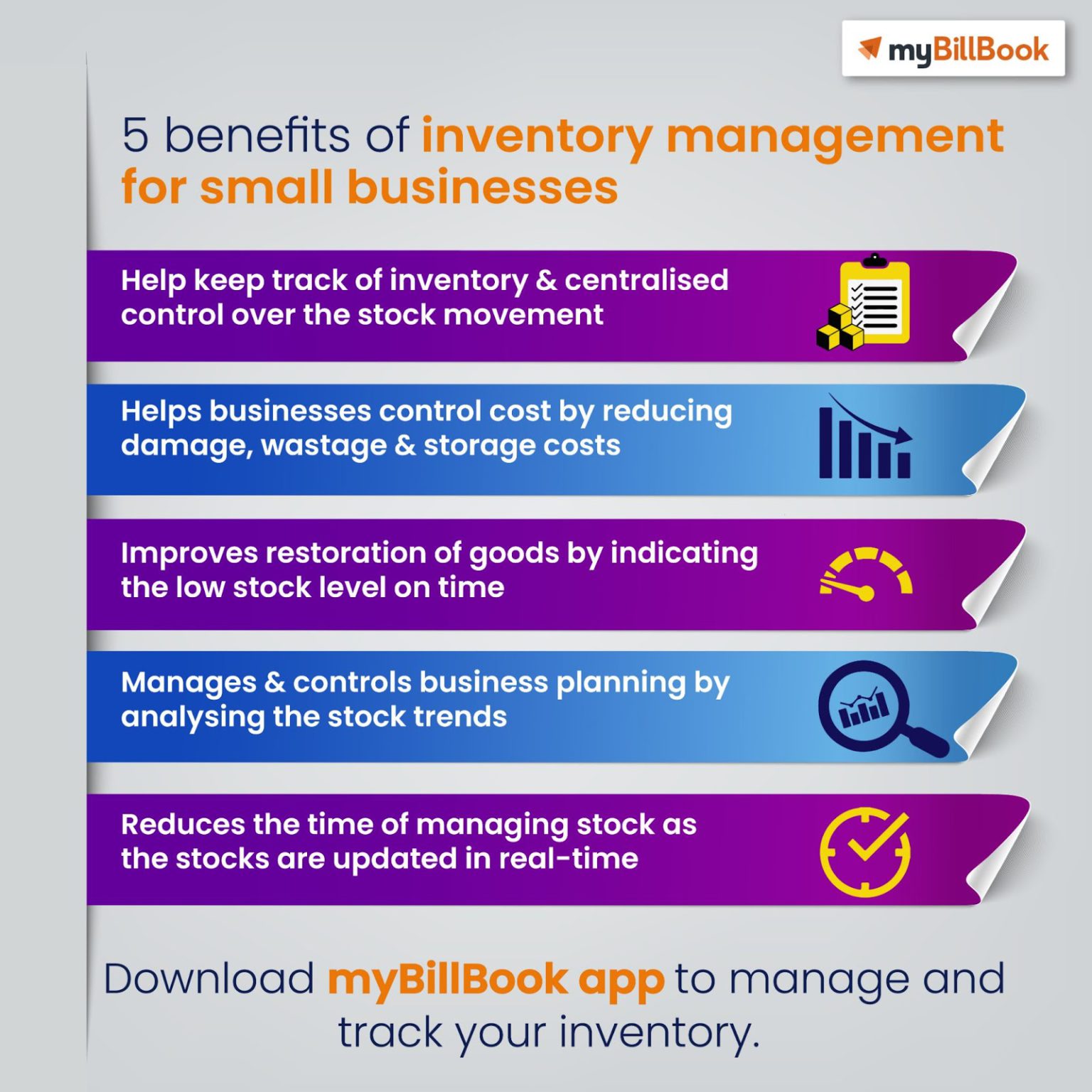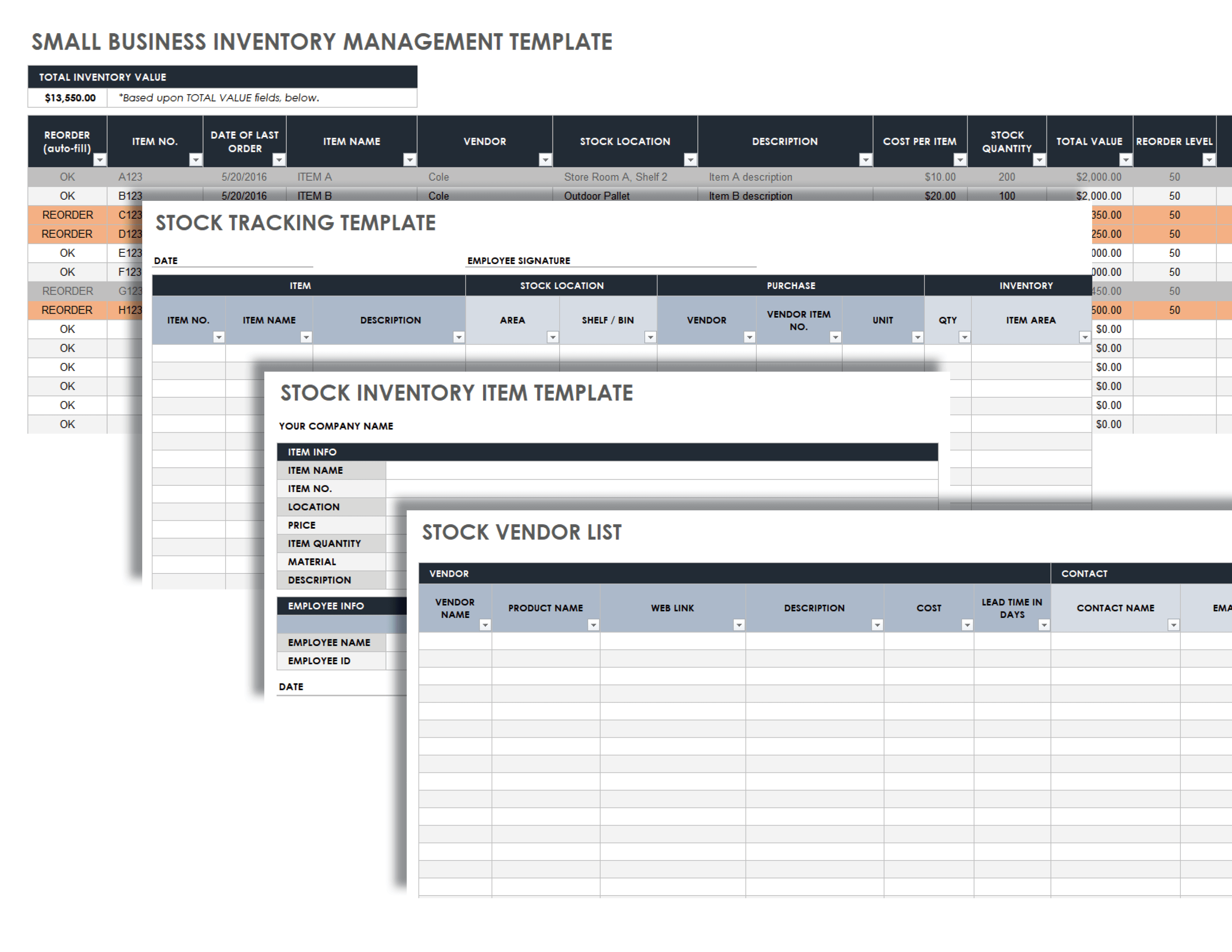Inventory management in small business – Inventory management is crucial for small businesses, as it enables them to optimize their operations, reduce costs, and enhance customer satisfaction. This guide delves into the intricacies of inventory management, providing valuable insights and practical strategies to help small businesses succeed.
Effective inventory management involves understanding different methods, utilizing appropriate tools, and developing robust strategies. By implementing these principles, small businesses can streamline their inventory processes, improve efficiency, and gain a competitive edge.
Understanding Inventory Management

Inventory management is the process of overseeing the flow of goods and materials within a business. It involves activities such as purchasing, storing, and tracking inventory levels to meet customer demand while minimizing costs. Effective inventory management is crucial for small businesses as it helps them:
- Meet customer demand by ensuring availability of products.
- Minimize waste and losses by preventing overstocking or understocking.
- Optimize cash flow by managing inventory levels efficiently.
Inventory management can be challenging for small businesses due to factors such as:
- Limited storage space and resources.
- Fluctuating demand and unpredictable sales patterns.
- Difficulty in forecasting future demand accurately.
Inventory Management Methods
Inventory management methods are systems and techniques used to control and optimize the flow of goods in a business. Effective inventory management helps businesses maintain the right amount of stock to meet customer demand while minimizing waste and costs.
Just-in-Time (JIT) Inventory, Inventory management in small business
- Advantages:
- Reduced inventory holding costs
- Improved inventory turnover
- Enhanced responsiveness to changes in demand
- Disadvantages:
- Increased risk of stockouts
- Potential for higher production costs
- Requires strong supplier relationships
- Examples:Toyota, Dell
Periodic Inventory System
- Advantages:
- Lower operating costs compared to perpetual inventory system
- Easier to implement
- Disadvantages:
- Less accurate inventory records
- Potential for stockouts
- Time-consuming to count inventory
- Examples:Small retail stores, non-profit organizations
Perpetual Inventory System
- Advantages:
- Accurate and real-time inventory records
- Reduced risk of stockouts
- Improved inventory control
- Disadvantages:
- Higher operating costs
- More complex to implement
- Requires constant monitoring
- Examples:Large retailers, manufacturers
Inventory Management Tools

Inventory management tools are essential for small businesses to streamline their inventory management processes, improve accuracy, and optimize stock levels. These tools offer a range of features and benefits that can help businesses save time, reduce costs, and improve customer satisfaction.
Types of Inventory Management Tools
There are several types of inventory management tools available, including:
- Barcode scanners:Barcode scanners allow businesses to quickly and accurately track inventory items by scanning their barcodes. This helps reduce errors and speeds up the inventory process.
- Inventory management software:Inventory management software provides a centralized platform for managing inventory data, including stock levels, item descriptions, and reorder points. This software can help businesses track inventory levels in real-time, generate reports, and optimize stock levels.
- RFID (Radio Frequency Identification) systems:RFID systems use radio waves to track inventory items. This technology allows businesses to track items without having to scan them individually, which can save time and improve accuracy.
Benefits of Using Inventory Management Tools
Using inventory management tools can provide a number of benefits for small businesses, including:
- Improved accuracy:Inventory management tools help reduce errors by automating the inventory tracking process. This can lead to more accurate inventory records and improved decision-making.
- Reduced costs:Inventory management tools can help businesses reduce costs by optimizing stock levels and reducing waste. This can lead to lower inventory carrying costs and improved profitability.
- Improved customer satisfaction:Inventory management tools can help businesses improve customer satisfaction by ensuring that they always have the products they need in stock. This can lead to increased sales and repeat business.
Overall, inventory management tools can be a valuable asset for small businesses. By using these tools, businesses can improve accuracy, reduce costs, and improve customer satisfaction.
Inventory Management Strategies
Developing an effective inventory management strategy is crucial for small businesses to optimize stock levels, reduce waste, and improve profitability. Here’s a guide to creating and implementing a successful strategy:
Importance of Inventory Management Strategy
- Improved Stock Control:Prevents overstocking or understocking, ensuring optimal inventory levels.
- Reduced Waste:Minimizes obsolete or damaged inventory, leading to cost savings.
- Enhanced Cash Flow:Optimizes inventory turnover, freeing up cash for other business operations.
- Increased Customer Satisfaction:Reduces stockouts and ensures product availability, improving customer experience.
Steps for Creating an Effective Strategy
- Establish Goals:Define specific objectives for inventory management, such as reducing inventory carrying costs or improving customer service.
- Analyze Demand Patterns:Forecast demand based on historical data, seasonality, and market trends to determine appropriate stock levels.
- Determine Safety Stock Levels:Calculate the minimum inventory required to meet demand during unexpected fluctuations or delays.
- Set Reorder Points:Establish trigger points to initiate new orders, ensuring timely replenishment of stock.
- Optimize Order Quantities:Determine the optimal quantity to order each time to minimize holding costs and avoid stockouts.
- Regular Inventory Audits:Conduct periodic audits to verify inventory accuracy and identify discrepancies.
- Use Inventory Management Software:Automate inventory tracking, forecasting, and reordering processes to improve efficiency.
- Monitor Key Performance Indicators (KPIs):Track metrics such as inventory turnover, carrying costs, and stockout rates to evaluate strategy effectiveness.
- Regularly Review and Adjust Strategy:Adjust the strategy based on changing demand patterns, market conditions, and feedback from inventory audits and KPI monitoring.
- Tracking inventory levels
- Managing purchase orders
- Generating reports
- Forecasting demand
- High SKU Count:Retailers manage a vast array of products with varying demand, requiring efficient inventory tracking and replenishment.
- Seasonal Fluctuations:Demand for products often fluctuates with seasons and holidays, necessitating accurate forecasting and flexible inventory planning.
- Customer Expectations:Customers expect quick order fulfillment and product availability, making inventory visibility and real-time tracking essential.
- Implement inventory management systems with real-time visibility and forecasting capabilities.
- Utilize demand forecasting techniques to anticipate seasonal variations and optimize stock levels.
- Establish vendor partnerships for reliable and timely replenishment to meet customer demands.
Best Practices for Implementation and Monitoring
Inventory Management and Technology
Technology plays a pivotal role in modern inventory management, transforming the way businesses track, manage, and optimize their inventory levels. It enhances accuracy, streamlines processes, and empowers businesses with real-time visibility into their inventory data.
Inventory management systems (IMS) are software solutions that automate many of the tasks associated with inventory management, such as:
IMS can be integrated with other business systems, such as accounting and enterprise resource planning (ERP) systems, to provide a comprehensive view of inventory data across the organization.
Radio frequency identification (RFID) technology uses tags to track inventory items and provide real-time visibility into their location and status. This technology can be used to improve inventory accuracy and efficiency, and to reduce shrinkage.
Barcode scanners are another common technology used in inventory management. Barcode scanners can be used to quickly and accurately scan inventory items, which can save time and reduce errors.
Mobile devices, such as smartphones and tablets, can be used to access inventory data and perform inventory management tasks on the go. This can improve efficiency and productivity, and it can also allow businesses to respond more quickly to changes in inventory levels.
Inventory Management for Different Industries

Inventory management practices vary significantly across different industries due to unique product characteristics, demand patterns, and operational requirements. Understanding industry-specific challenges and best practices is crucial for effective inventory management.
Let’s explore inventory management considerations and strategies in three key industries: retail, manufacturing, and healthcare.
Retail
Best Practices:
Closure

In conclusion, inventory management is a cornerstone of small business success. By embracing the strategies and tools Artikeld in this guide, small businesses can optimize their inventory practices, minimize waste, and maximize profitability. Effective inventory management empowers businesses to respond to market demands, meet customer expectations, and lay the foundation for long-term growth.
FAQ Resource: Inventory Management In Small Business
What is the primary goal of inventory management?
The primary goal of inventory management is to ensure that businesses have the right amount of inventory at the right time to meet customer demand while minimizing costs.
How can inventory management help small businesses save money?
Inventory management helps small businesses save money by reducing waste, optimizing purchasing, and improving cash flow.
What are some common inventory management challenges faced by small businesses?
Common inventory management challenges faced by small businesses include inaccurate inventory counts, overstocking, and stockouts.